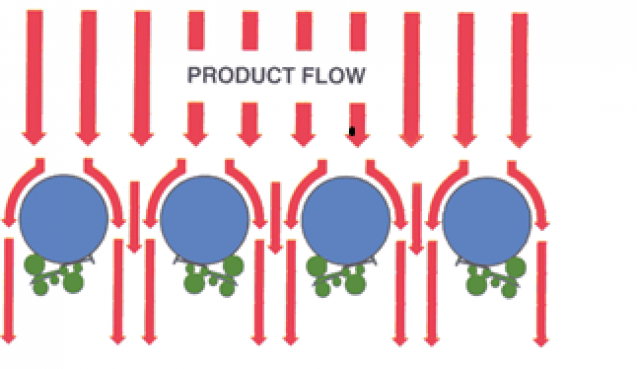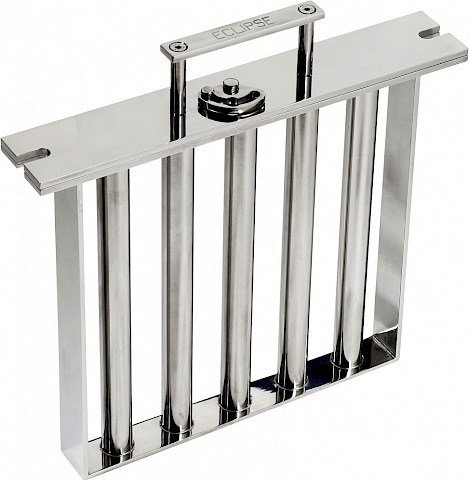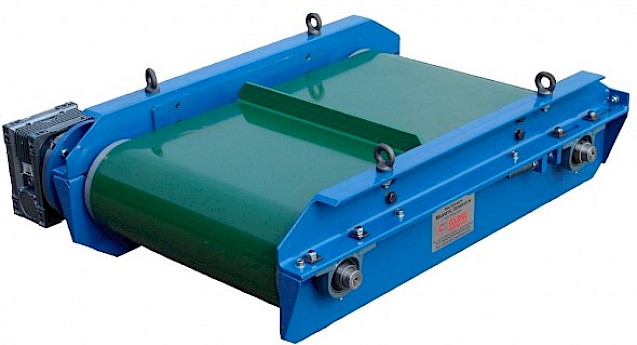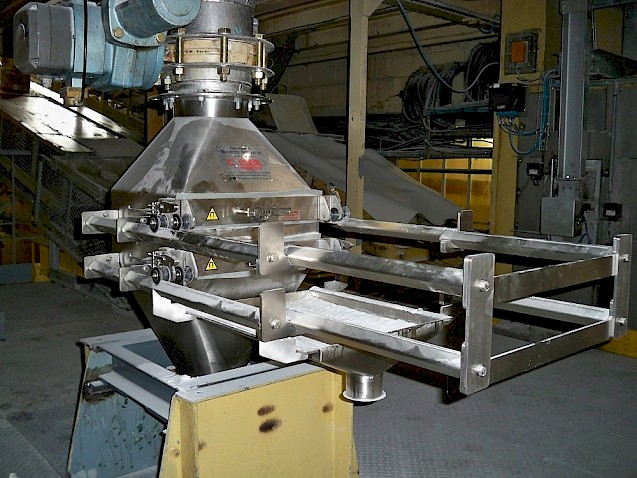Housed Easy Clean Grid Magnetic Separator
Easy clean, high intensity magnetic grid separator
Magnetic separation is a critical part of many industries, including food processing, pharmaceutical and chemical industries. High gradient magnetic separators play a vital role in protecting key manufacturing processes from potentially harmful and costly metal particle contamination. A product recall could potentially cost the manufacture huge sums of money, not to mention damage to brand confidence.
On this page, we'll explain more about magnetic separators and how they could help to protect your brand reputation.

A magnetic separator applies basic magnetic principles to remove ferrous based and paramagnetic metals from a range of substances including powders, granules, liquids, pellets or pastes. They are usually installed within the product stream at key HACCP or inspection points.
We produce a wide range of magnetic separators including, magnetic grids, magnetic tubes, magnetic rods and overband magnets.

Magnetic separators can be fitted at a variety of critical control points within the production line, including silo intake, on conveyor belts and in pneumatic lines. The raw material or finished product is fed either by gravity, air, pumped or conveyor belt, where it passes through or over a magnetic rod, grid, grate or plate.
The magnetic field captures the ferrous contamination by attracting it to the magnetic tube or plate. The non-magnetic clean product can then continue through the process.

There are various types of magnetic separator, the choice is dependent on the feed method and the substance being fed.
They are typically split into 2 groups – primary magnetic separators and secondary magnetic separators.
Primary separators are used to prevent machinery damage and remove larger ‘tramp’ type contamination such as nails, screws and bolts. They are usually installed around bulk intake points or in applications where the bulk materials are flakes or pellets (non-powder).
Various options exist such as magnetic strips, bands or plates which sit over or under conveyors. Or rotating magnetic drums or chutes which fit into gravity free fall processes.
Secondary pipeline magnetic separators guarantee product purity and quality by removing ultra-fine particle ferrous contamination such as natural process machinery wear.
Usually located in mid or end of process, options include simple magnetic rods, grid magnets, grate magnets, housed grids, high pressure grids, rotating grids or housed rod assemblies and multi row self-cleaning grids.

An overband magnet (also called an overband magnetic separator or crossbelt magnet) is a heavy-duty magnetic separation device designed to remove ferrous metal contaminants, such as tramp steel from material streams moving on conveyor belts. It is typically installed above flat or trough type conveyors in industries like recycling, quarrying, mining, and waste management. The magnet creates a strong magnetic field that attracts ferrous metals from the conveyed material. These metals are lifted out of the material flow and carried away by a self-cleaning belt system, which continuously discharges them into a collection area.

Magnetic separators are effective in any sector which has risk of ferrous particle ingress. Safety critical processes such as food, pharmaceuticals and chemicals use both primary and secondary separators to protect powders, granulates and liquids.
For example, in the food processing industry, you'll find our magnetic separators and food grade magnets used on produce such as:
In other industries such as recycling and construction materials, primary separation may be adequate. Typical examples include:
Different magnet materials have different properties, so the choice is very important. The latest high intensity magnetic separators use Neodymium (NdFeB) (also known as Rare Earth) magnets. This is the strongest magnet material and is effective in extracting the finest ferrous and paramagnetic particles. For example, rare earth magnetic separators are very common in the plastic and recycling industry because of their strong magnetic field that can remove fine contamination.
Depending on the intensity required for the application, Neodymium magnets are available in strengths typically between 7,000 and 12,000 Gauss, the higher the Gauss number the stronger the magnetic force. Samarium Cobalt and Ferrite (Ceramic) magnet materials are also available often for applications where the particle size is larger, or the magnetic field needs to be projected further. These materials typically have a weaker magnetic strength (circa 3000 Gauss) but can withstand higher temperatures and exposure to corrosive elements.
These are not recommended for safety critical applications such as food or pharmaceutical. In a magnetic separator the magnet is contained in tube or cover. When specifying the magnetic strength, it is important to check with the manufacturer that the Gauss reading is taken on the outside of the tube or cover as this will be a true measure of the magnets’ effectiveness.

Magnetic metal separators are ideal for many different installation points on gravity, free-fall, pneumatic, pumped or conveyor feed processing lines. They can be placed at various stages: during raw material intake to inspect incoming ingredients, at critical HACCP control points mid-production, or at the final stage to safeguard finished products during bulk discharge.
Typical installation points include gravity-fed chutes, pre and post sifting, bulk tanker discharge, ingredient sieving, pre and post mixers, vacuum or pneumatic lines, grain tips, sack rip and tip stations, above or below transfer conveyors or vibratory feeders.
In areas with strict hygiene requirements such as the food processing and pharmaceuticals industries, process equipment is often made from 304 or 316 stainless steel. We are often asked whether the magnets are effective in removing minute process wear fragments which become detached from machinery and equipment.
The answer is yes, in fine particle form i.e. (< 0.1-3mm) 304 and 316 Stainless Steel change properties to become paramagnetic. Exposure to a strong magnetic field induces a magnetic response in the same direction of the magnetic force being applied. This means that fine 304 and 316 Stainless Steel particles can be extracted by high intensity magnets such as Neodymium.
Visit our free guide 'Is Stainless Steel Magnetic?' to learn more about stainless steel and how magnetic separators and metal detectors play a critical role in the food industry.